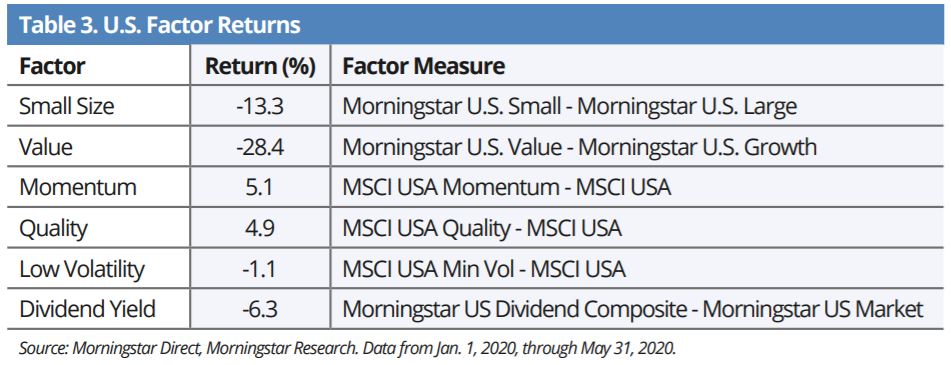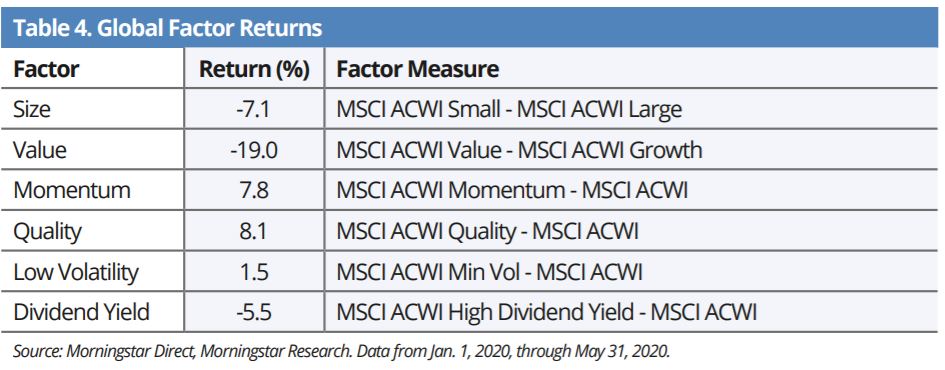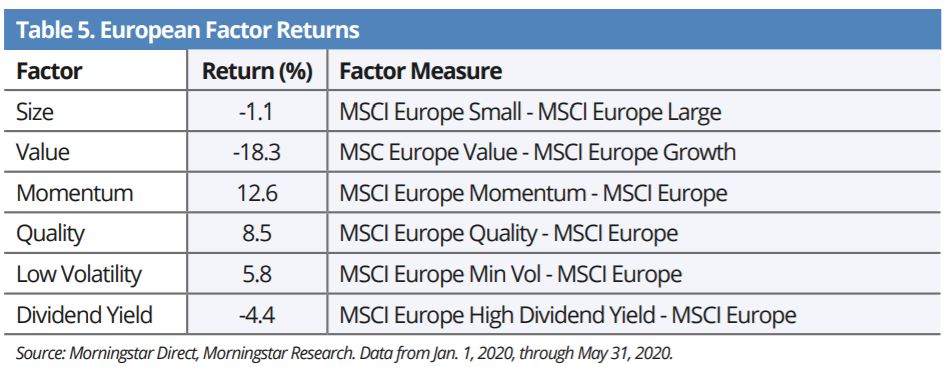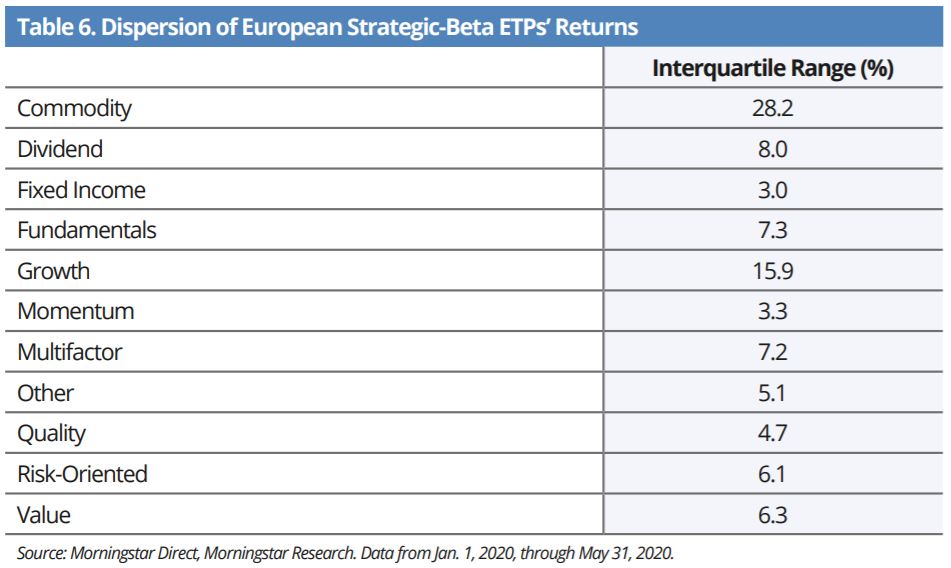In the first five months of 2020, the Covid-19 crisis roiled markets. This episode reinforced important lessons about strategic beta approaches to portfolio construction and taught some new ones about how these products perform in stressed markets.
Strategic beta – widely referred to as “smart beta” – aims to capture a specific factor or set of factors such as value, momentum, size, low volatility, or quality.
They are widely marketed for their ability to enhance returns or minimise risk relative to more traditional benchmarks. While many aim to capture market premia which have been academicallysubstantiated over decades, most of the ETPs currently available in Europe have relatively short live track records.
The recent market turmoil has given many of these products the first real stress test. By looking moreclosely at the performance of these products over this period, we can understand how they might perform in future market environments. Additionally, by observing how funds tracking the same investment factor have performed, we can see to what extent differences in product construction can have a meaningful impact on investment outcomes.
Covid-19 performance: A mixed bag
The performance among European-listed strategic beta ETPs in the first five months of 2020 was mixed.
Table 1 shows the average return for ETPs in each Morningstar Strategic-Beta Group, as well as the corresponding average return for their Morningstar Category Indexes. European-domiciled strategic beta ETPs’ average returns were lower relative to the relevant Morningstar Category Indexes for six of 11 strategic-beta groups. The success rates for each group, shown in Table 2, tell a similar story. These are calculated as the percentage of strategic-beta ETPs in each Morningstar Strategic-Beta Group that outperformed their respective Morningstar Category Indexes during the first five months of 2020.

In Europe, strategic-beta ETPs’ success rates were greater than 50% in six of 11 strategic-beta groups. The higher success rates in the commodity group represent strategic-beta ETPs’ lower exposure to front-month oil futures contracts during this span.

Meanwhile, ETPs belonging to the quality strategic beta group benefitted from their relatively defensive postures. Fees are a contributing factor to the figures here. The Morningstar Category Indexes do not charge fees, while strategic-beta funds do. But there is more to the story. In many cases, these funds’ factor tilts also contributed to their underperformance.
Size and value tilts hamper returns
Many strategic-beta equity funds, particularly those in the dividend, multifactor, and value groups, tend to tilt toward stocks with smaller market capitalisation and lower valuations. Those two factors (small size and value) underperformed other factors during the first five months the year among US, global and European Equities (see Tables 3,4 and 5).



Performance across all factors was better among global and European equities than among US stocks. On the fixed-income side, strategic-beta funds tend to take greater credit risk than their respective category benchmarks. This hurt performance between January and May 2020.
Zooming in
Within most strategic-beta groups, there was considerable dispersion in returns, as Table 6 summarises. This dispersion partially reflects the diversity of the range of the Morningstar Categories each strategic-beta group spans.

However, there was still significant dispersion within some of the larger categories. In Europe, the commodity group saw the widest dispersion among all the strategic-beta groups owing to the diversity of commodity-related ETPs available in the market, added together with the volatility experienced in the commodity space during the period.
Strategic-beta ETPs in the growth group saw the second-highest level of performance dispersion in the first five months of this year, albeit from a small sample of five ETPs in this group. Within the small group’s performance spectrum, the Deka STOXX Europe Strong Growth 20 ETF (EL4C) gained 5.71% while the iShares Euro Total Market Growth Large UCITS ETF (IDJG) lost 11.49%.
The Deka ETF tracks an index with a concentrated portfolio of 20 stocks in Europe with the highest growth characteristics and doubles down on the growth factor by weighting constituents by their growth scores, giving it a small size tilt. The iShares ETF tracks an index with the eurozone as the starting point and captures the large-cap stocks with growth characteristics to form a portfolio weighted by market capitalisation. The fund had around 70 holdings as of April 30, 2020.
These differences are apparent from the funds’ Morningstar Factor Profiles, as Exhibit 7 shows. Deka’s EL4C captured stocks with stronger growth characteristics, which also exhibited higher momentum and quality, the factors that captured the highest returns during the first five months of this year.

Source: Morningstar
To conclude, strategic beta is an active approach to portfolio construction. Strategic beta ETPs’ performance through recent market volatility underscores the fact that – like discretionary active portfolios – no two of these products are created equal.
Our analysis of their performance during the first five months of 2020 reveals the differences between them and emphasises the importance of thorough due diligence when selecting from the strategic beta ETP menu.
Kenneth Lamont is senior analyst, manager research, passive strategies, at Morningstar
This article first appeared in the Q3 2020 edition of Beyond Beta, the world’s only smart beta publication. To receive a full copy,click here.



